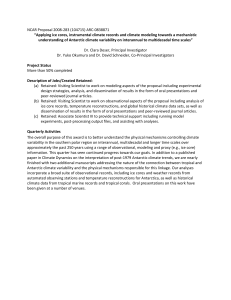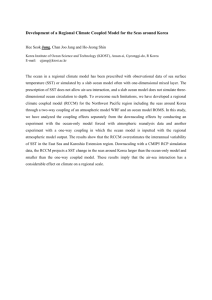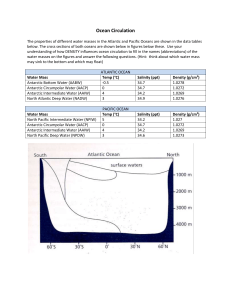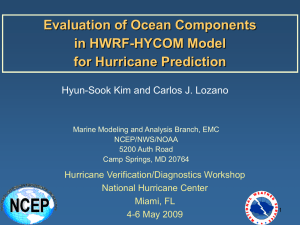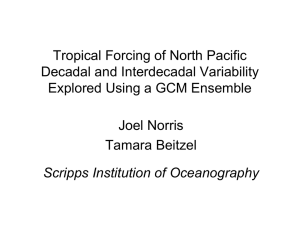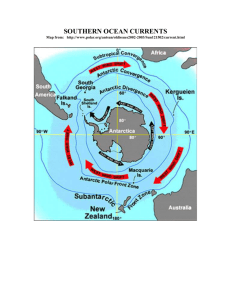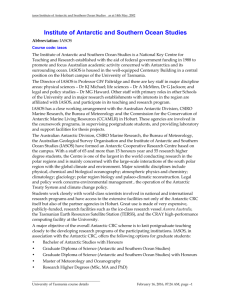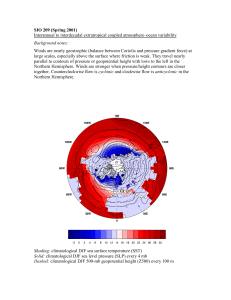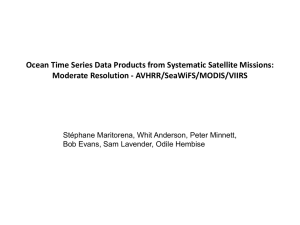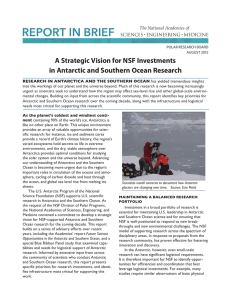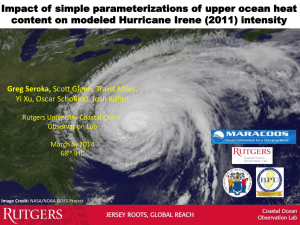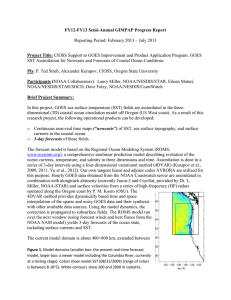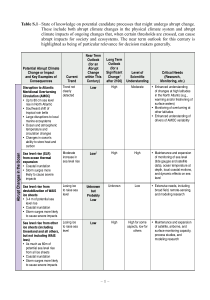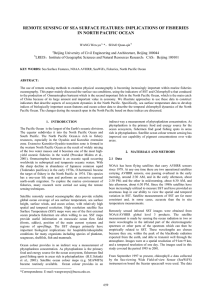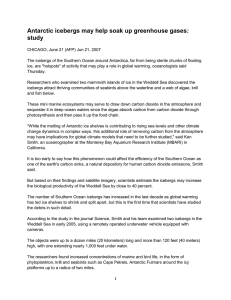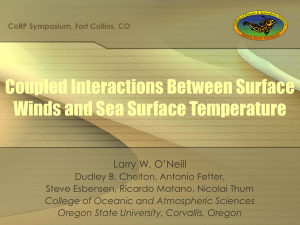Variability and Trends in Antarctic Sea Surface Temperatures and
advertisement
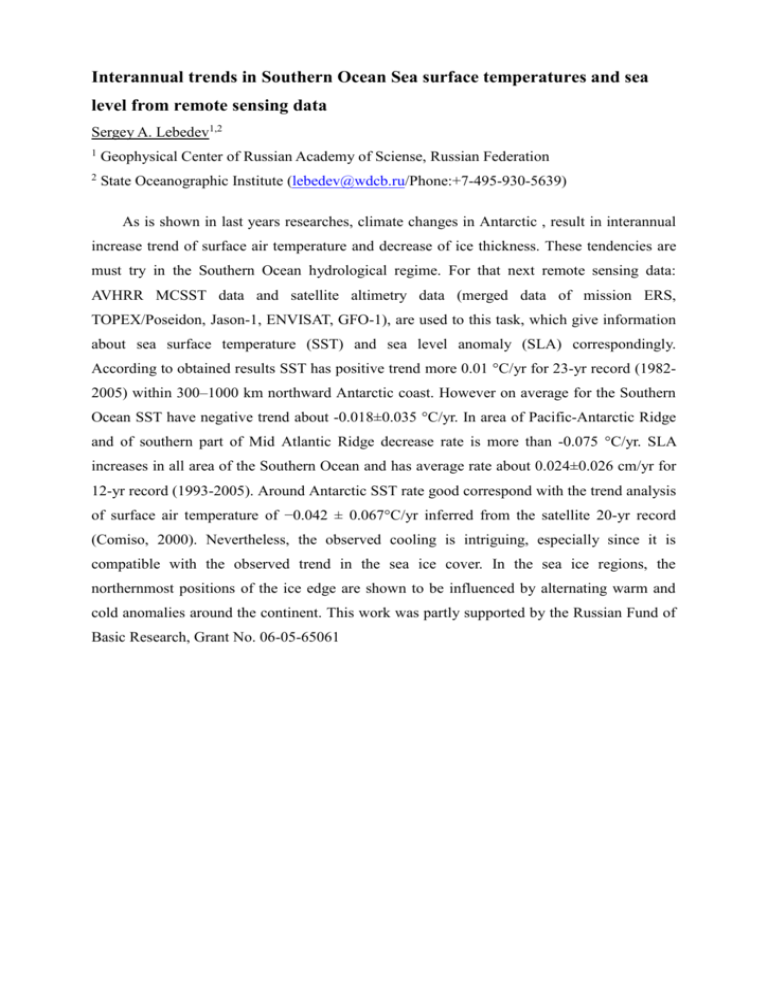
Interannual trends in Southern Ocean Sea surface temperatures and sea level from remote sensing data Sergey A. Lebedev1,2 1 Geophysical Center of Russian Academy of Sciense, Russian Federation 2 State Oceanographic Institute (lebedev@wdcb.ru/Phone:+7-495-930-5639) As is shown in last years researches, climate changes in Antarctic , result in interannual increase trend of surface air temperature and decrease of ice thickness. These tendencies are must try in the Southern Ocean hydrological regime. For that next remote sensing data: AVHRR MCSST data and satellite altimetry data (merged data of mission ERS, TOPEX/Poseidon, Jason-1, ENVISAT, GFO-1), are used to this task, which give information about sea surface temperature (SST) and sea level anomaly (SLA) correspondingly. According to obtained results SST has positive trend more 0.01 °C/yr for 23-yr record (19822005) within 300–1000 km northward Antarctic coast. However on average for the Southern Ocean SST have negative trend about -0.018±0.035 °C/yr. In area of Pacific-Antarctic Ridge and of southern part of Mid Atlantic Ridge decrease rate is more than -0.075 °C/yr. SLA increases in all area of the Southern Ocean and has average rate about 0.024±0.026 cm/yr for 12-yr record (1993-2005). Around Antarctic SST rate good correspond with the trend analysis of surface air temperature of −0.042 ± 0.067°C/yr inferred from the satellite 20-yr record (Comiso, 2000). Nevertheless, the observed cooling is intriguing, especially since it is compatible with the observed trend in the sea ice cover. In the sea ice regions, the northernmost positions of the ice edge are shown to be influenced by alternating warm and cold anomalies around the continent. This work was partly supported by the Russian Fund of Basic Research, Grant No. 06-05-65061
